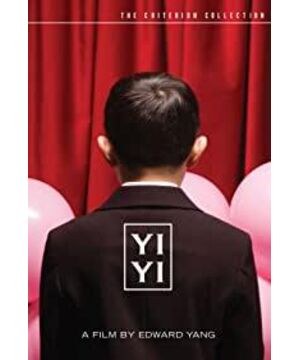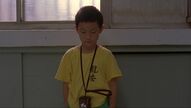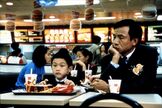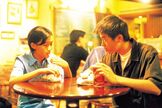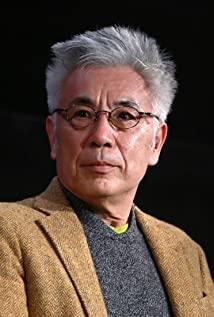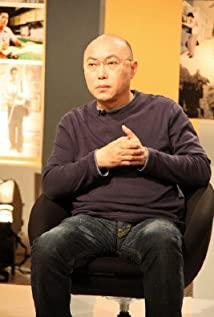The film outlines a complete picture of the living conditions of middle-class families in Taiwan. The father’s business was challenged and he met his first love; the mother relied on spiritual practice to heal the pathological depression; the grandmother was in a coma and listened to the narration of the crowd; the daughter met his first love; the son thought the camera would allow him to see the back of things.
"Era of Independence" and "Yi Yi" avoid crowd scenes. Taiwan in the 1990s has surpassed the period of mass gatherings and street gatherings. Poor students fell in love in fast food restaurants, and rich students went to teahouses. The last line of the dialogue of "Independence Age" is "Let's go to FRIDAY for coffee". Light, shadow and sound are easy to control in such a place.
"Yi Yi" was made with Japanese money. There is clearly a choice: more naturalistic dialogue or very clear dialogue. Edward Yang chose the latter. From a technical point of view, this is his most perfect film in terms of photography, recording and editing. However, any choice of technical means has clear or potential aesthetic significance.
In "Yi Yi", there are many cases where wireless microphones destroy the sense of space. Wen-ching Wu was sitting in the car at a distance and talking to others, with the windows closed, but his voice was meticulous, and it was definitely the same time. Although there are some reluctances to this approach, in contrast, running into the car to shoot, really respects the sense of space, but the feeling of distance is completely changed. Edward Yang prefers to respect the proper sense of distance visually, and at the same time make the sound as good as his ears. In other words, in case the sound is the same as the light, there is a shadow, Edward Yang completely erased the shadow of the dialogue voice in "Yi Yi".
The sound is also very practical and neat when editing. But what is erased is only the shadow of the sound in the physical sense, noisy and unclear sounds that interfere with each other, and the dialogue with ambiguous meaning. The shadow of the voice is physically left behind. Every audience is a vegetative grandmother, listen to them. Many viewers will find the back of the dialogue by themselves after watching it. (
)
The film revolves around the people in a traditional Taipei family, and runs through the three ceremonies of wedding, baby's full moon, and funeral, and faintly lists all the worries at all stages of life. Some of them will look back at their middle-aged parents who were revalued in the first half of their lives, young sisters who first tasted love, and children who are not familiar with the problems of the world every day.
The first discovery of the film may be its own style, condensing a quiet telescope with a sense of distance. This kind of scheduling suppresses the tone of the film very indifferently, and strives to "de-dramaticize", in order to not only say that this kind of plot is nothing special, but is a must in life; it also draws the audience away from the plot, Constructs a space for reflection, allowing people to reshape their hearts and connect their own experiences. Then the audience may find that the film borrows many things that are almost bound to happen to people as a symbol.
The wedding means the birth of another family; the baby reminds you of life; and then the mother-in-law’s coma brings death threats. These settings remind viewers of several unavoidable issues in life-family, life and death. What's more, there are typical characters in the film, and none of them are mavericks. What they encounter is also commonplace.
All these are added together in order to copy the true state of each stage of existence and construct a life model that pays attention to meticulousness and reality.
Then, nearly three hours in length, there are many branches that can be independently formed into chapters. Why does the director have to tell the stories of so many characters at once? In addition to encompassing all stages of life, it is more important to juxtapose these stages so that the viewer can stand taller and take the thread of life in a more three-dimensional and multi-faceted form. see. At the same time, it also emphasizes the value of maintaining people's family.
So you will find that this way of expression is much more vivid and accurate than tracing a character's growth from childhood to earth. Furthermore, this three-dimensional presentation also makes the message that the director wants to convey through the film more natural.
For example, Xiaoer Yangyang faced the reality alone and plucked up the courage to jump into the water to overcome his fear of swimming; that turned out to be a response to the problem of adult escape. In addition, when my father went to Japan on business to date his old lover, the memory of his first love and the throbbing of his eldest daughter Tingting's first date with the boy were intertwined and juxtaposed, echoing each other. In this passage, the director made the viewers understand that although the eldest daughter could not let herself and the boy be together in the end, when she grew up, one day when she looked back at the passage between herself and her old lover like a father, she would again Like my dad, I understand that even if everything is overturned, their choices will not change much, and there is nothing to regret.
Summarizing the whole film, the director told the viewer that when death comes near us, we naturally know how to live in the present. What you need to live in the moment is to face reality, and then you will find that there is nothing to be afraid of, and there is not much to regret. This is growth, this is life. In conclusion, the importance of the film lies in its re-emphasis of family values in this disintegrated contemporary city, and at the same time, it uses typical characters to form social models for realistic films in a family, replacing social phenomena with the state of life. Handed over a demonstration work that must be seen again. (
)


